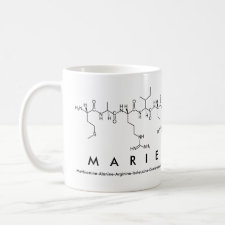
Authors: Weyland M, Ferrère S, Lattes A, Mingotaud AF, Mauzac M
Article Title: Artificial enzymes based on imprinted liquid-crystalline materials.
Publication date: 2008
Journal: Liquid Crystals
Volume: 35
Issue: (2)
Page numbers: 219-231.
DOI: 10.1080/02678290701751566
Alternative URL: http://www.informaworld.com/10.1080/02678290701751566
Abstract: Liquid-crystal elastomers, imprinted around indole, are assessed as artificial enzymes for the isomerisation of benzisoxazole into 2-cyano phenol. Two types of material are synthesised, tested in the catalysis and compared with non-liquid-crystal imprinted polymers: an imprinted liquid-crystalline elastomer and a semi-interpenetrated imprinted liquid-crystal network. The catalytic effect of all materials is close. However, the main benefit for the liquid-crystal elastomer is shown to be the shape memory of the material at the molecular scale, because the isomerisation kinetics are found to be identical before and after deformation of the cavities either by thermal treatment up to the isotropic state or by solvent induced swelling. This fact is related to the coupling between the order and the conformation of the polymer chains, which is fixed by the crosslinking process. On the other hand, the imprinted sites of the semi-interpenetrated imprinted liquid-crystal elastomer are shown to be almost 100 times more active than the non-imprinted sites in the catalysis. This factor is only 22 for the corresponding non-liquid-crystalline network
Template and target information: indole, benzisoindole
Author keywords: elastomers, enzymes, liquid-crystalline polymers, molecular imprinting, semi-interpenetrated networks



Join the Society for Molecular Imprinting

New items RSS feed
Sign-up for e-mail updates:
Choose between receiving an occasional newsletter or more frequent e-mail alerts.
Click here to go to the sign-up page.
Is your name elemental or peptidic? Enter your name and find out by clicking either of the buttons below!
Other products you may like:
 MIPdatabase
MIPdatabase









